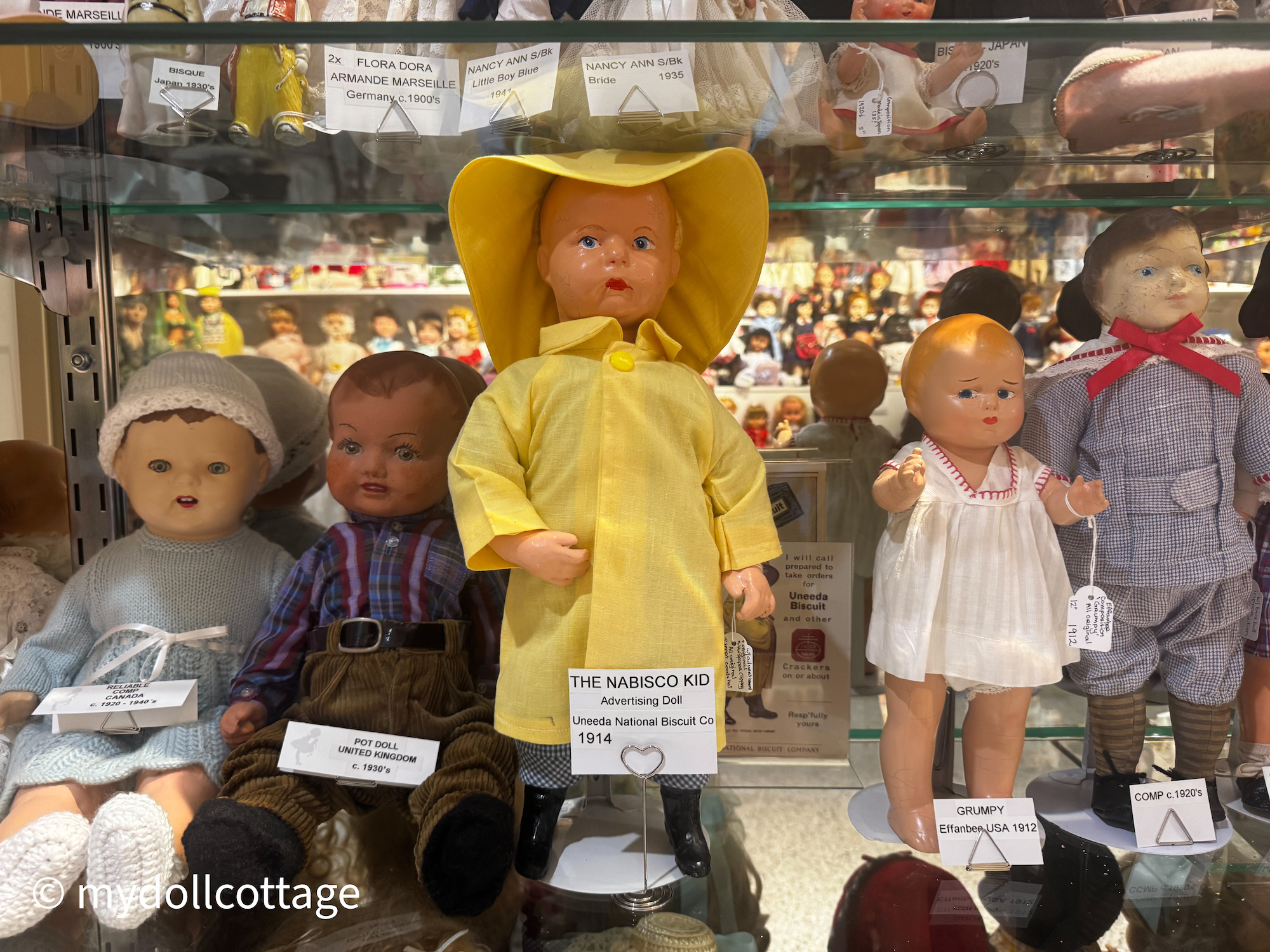
At MyDoll Cottage, one of the most common questions we get from visitors is,
“What are dolls actually made of?”
The answer? It depends on the era, the maker, and the purpose — and it’s often more fascinating than you might think.
Over the years, dolls have been made from everything from wood and wax to celluloid, cloth, porcelain, composition, plastic, and modern vinyl. Each material tells a story about the time it came from: what resources were available, what styles were popular, and what children (and adults) valued in their toys.
Let’s take a walk through some of the most common materials used in doll making — many of which you’ll find on display in our museum.
1. Wood
Time Period: Pre-1800s to early 1900s
Used for: Carved dolls, folk art, and early European dolls
Common makers: Queen Anne-style, Grodnertal peg dolls
Wooden dolls were often hand-carved and painted. Some had jointed limbs and simple painted faces, while others were more detailed with glass eyes and fabric clothing. These dolls were sturdy but aged with wear — cracks, splits, and flaking paint are common signs of age.
2. Wax
Time Period: Early 1800s to mid-1900s
Used for: Luxury dolls and delicate features
Common types: Wax-over-composition heads, poured wax dolls
Wax dolls were prized for their lifelike appearance and softness. Some were entirely made from wax, while others had a composition core with wax layered over the face. They’re delicate and prone to melting or cracking over time, especially in warmer climates like Australia’s — which makes them one of the more fragile types in our collection.
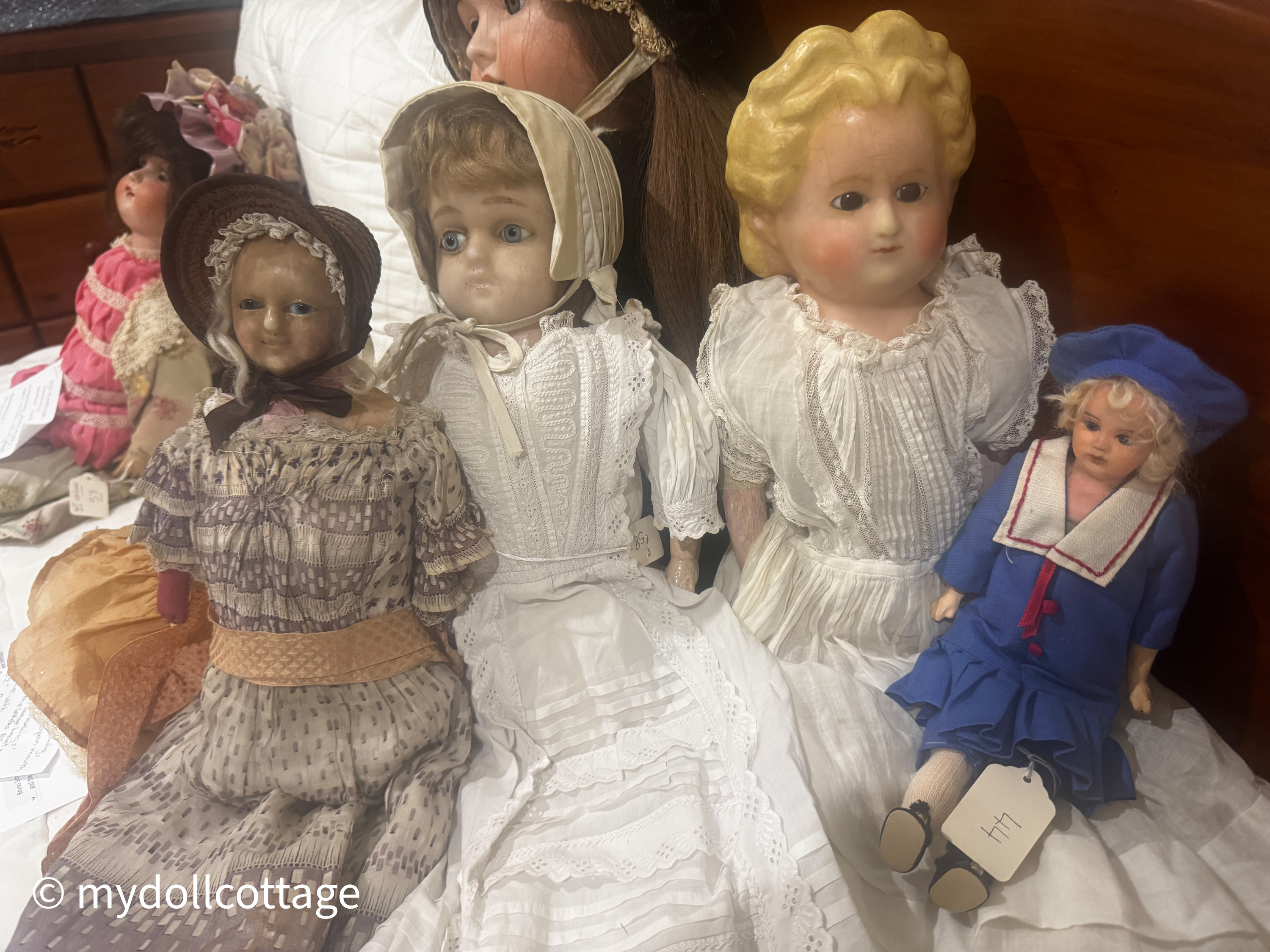
3. Porcelain & Bisque
TimePeriod: Mid-1800s to early 1900s
Used for: High-end dolls, often with cloth or leather bodies
Common brands: Armand Marseille, Kestner, Simon & Halbig, Jumeau
Often confused with each other, porcelain dolls have a glazed, shiny surface, while bisque is unglazed and matte — giving dolls that soft, realistic skin tone.
Heads were often hollow and mounted on cloth or leather bodies. These are some of the most collectible dolls in the world today, and many are proudly displayed in our antique section.
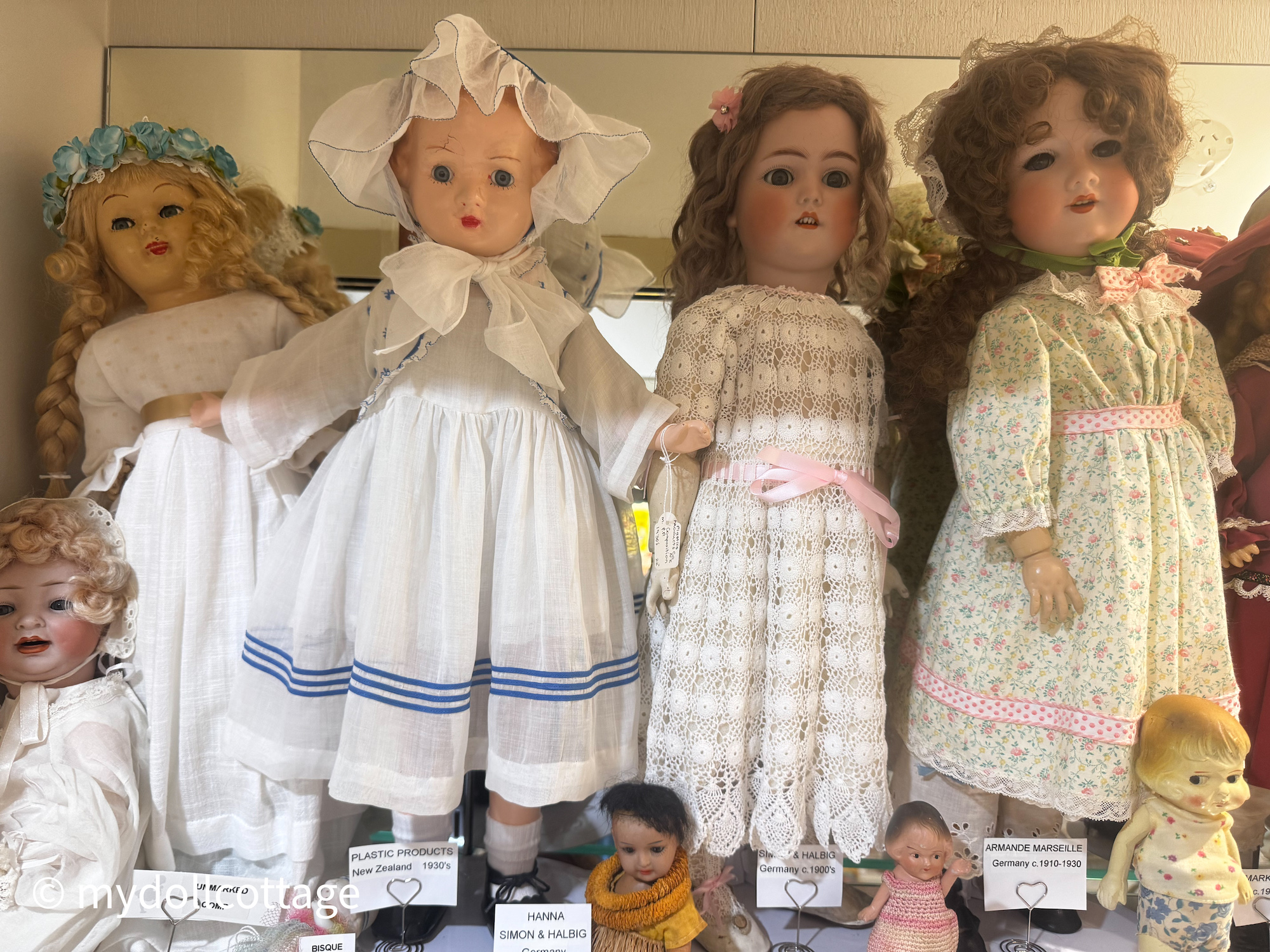
4. Composition
TimePeriod: 1900s–1940s
Used for: Durable play dolls before plastic
What is it? A mix of sawdust, glue, and resin pressed into moulds
Composition dolls were tough and could be mass-produced. They were less expensive than porcelain and less fragile — though they are still sensitive to moisture and temperature. Over time, they may develop cracking or crazing (a spider web pattern on the surface).
Common makers in our collection: Effanbee, Ideal, Arranbee

5. Celluloid
TimePeriod: 1900s–1950s
Used for: Lightweight dolls, rattles, and early baby toys
Warning: Highly flammable and brittle
Celluloid was a popular material for toy-making due to its low cost and flexibility.Unfortunately, it’s extremely sensitive to heat and light, and can become very fragile with age. These dolls often have a hollow, thin feel and can warp or crack easily.
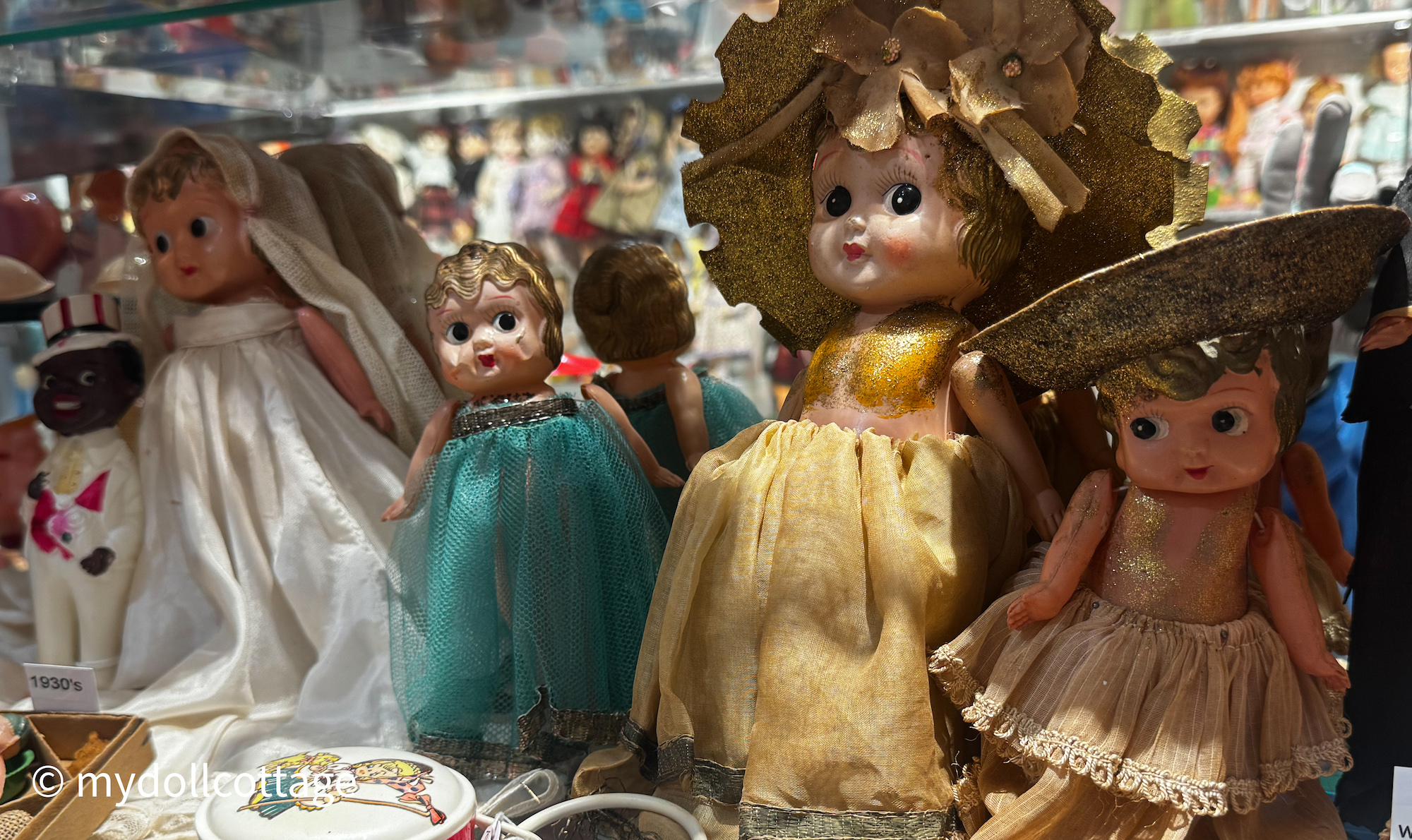
6. Hard Plastic
TimePeriod: 1940s–1960s
Used for: Fashion dolls and baby dolls
What changed? Dolls became washable and long-lasting
Hard plastic replaced composition after WWII and became the go-to material for durable, brightly coloured dolls. It allowed for more movement, detailed features, and hair-rooting.
On display at My Doll Cottage: Crissy, Tressy, Ideal dolls, Pedigree play dolls
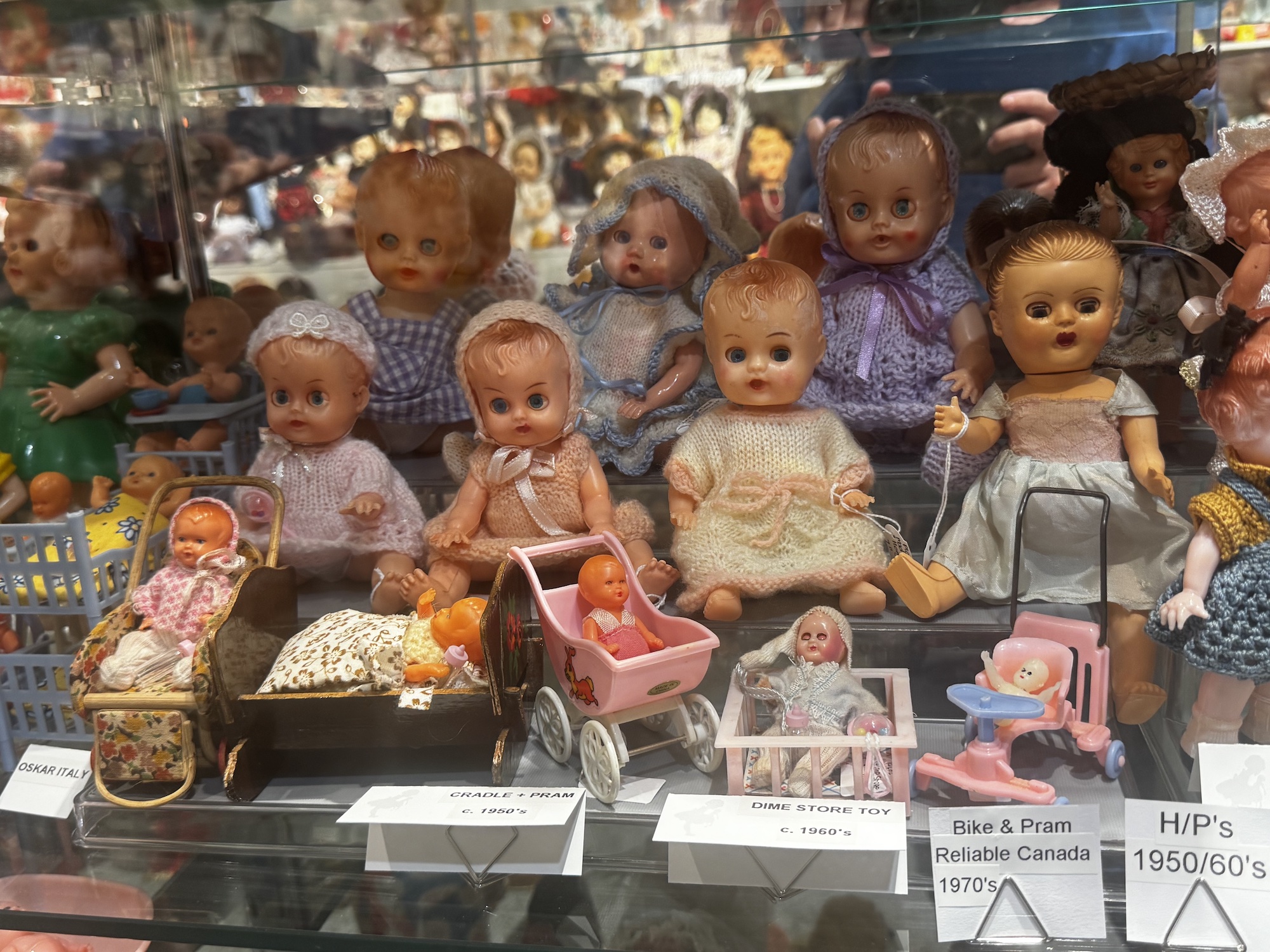
7. Vinyl
Time Period: 1960s–Now
Used for: Barbie, Bratz, Paola Reina, modern play and reborn dolls
Vinyl became the standard for most dolls from the 1960s onwards. It’s flexible, washable, and comes in soft or firm textures. Most modern dolls — from fashion to baby to collectable — are made with vinyl heads and limbs, often on cloth or plastic bodies.
Vinyl is generally sturdy but can discolour, harden, or become sticky over time(especially in warm, humid areas without proper storage).

8. Cloth, Rubber & Other CreativeMaterials
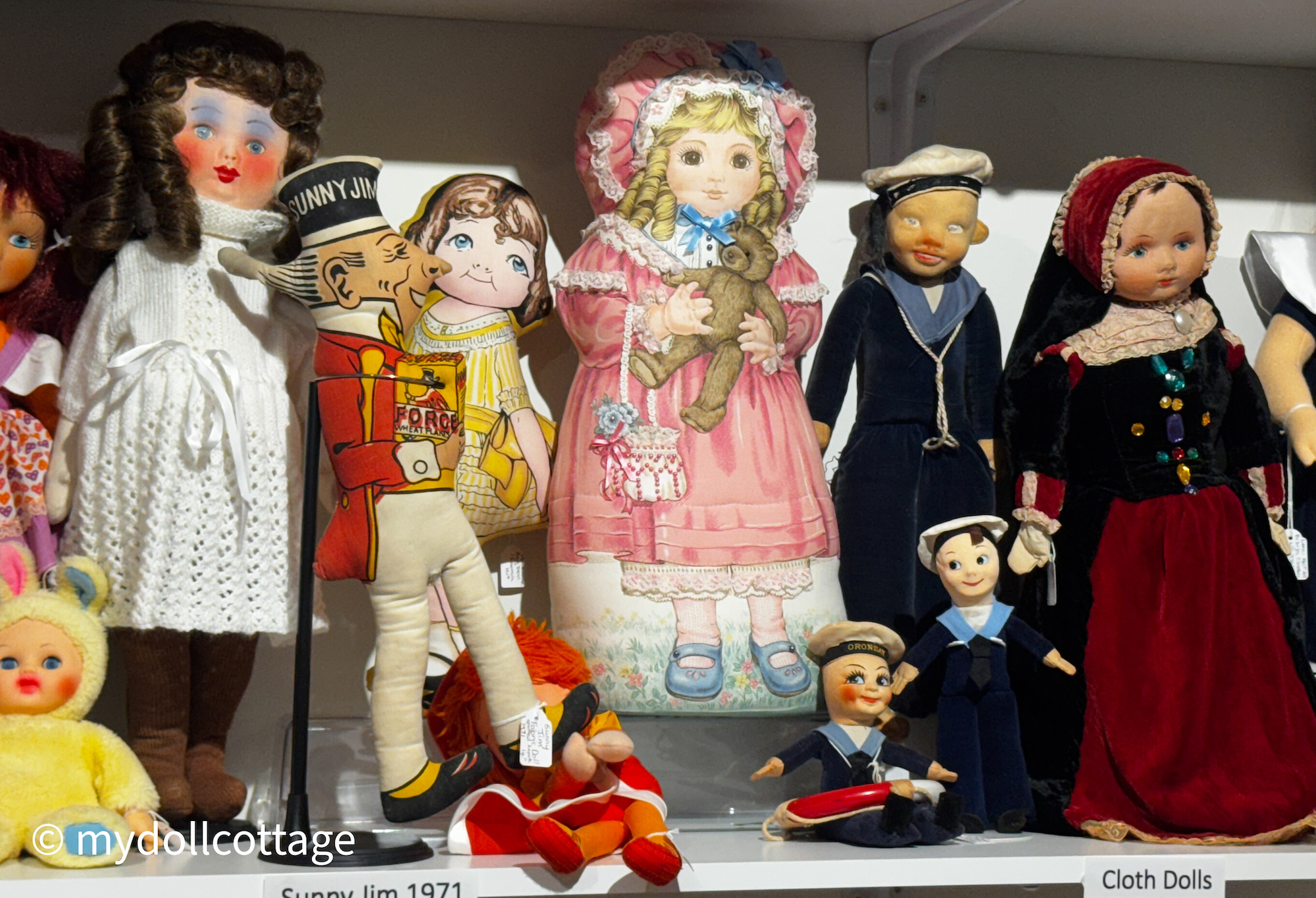
Curious About What Your Doll Is Made Of?
If you’re unsure what your doll is made from, visit us or send a message! You can also follow us on:

We’re working on printable guides and doll ID tools — stay tuned on www.mydollcottage.com.auor our Etsy store for future downloads.
With love
Shyloh
Tales from the youngest daughter of a doll collector — raised on Milo, Vegemite, and more antiques than a country op shop.